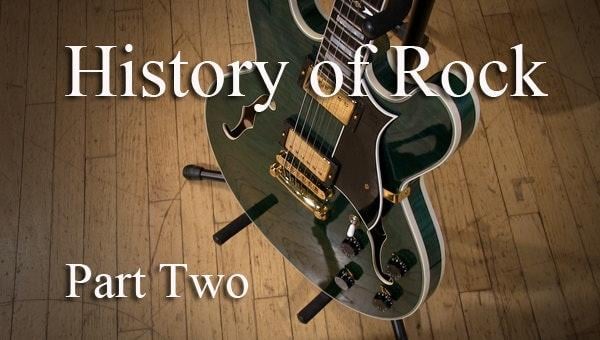MOOC List is learner-supported. When you buy through links on our site, we may earn an affiliate commission.

MOOC List is learner-supported. When you buy through links on our site, we may earn an affiliate commission.
Emerging out of the experimental and ambitious years of late-60s psychedelia, rock splintered into a variety of styles in the 1970s as the music business continued to expand. By the end of the decade, punk and disco had challenged the excesses of the hippie aesthetic, as rock became more commercially streamlined and radio friendly. The emergence and rise of MTV transformed pop music and propelled the careers of Michael jackson and Madonna, while heavy metal and hip hop dominated the late 1980s. Nirvana leads alt-rock's return to simplicity in the early 1990s.
Syllabus
WEEK 1
Introduction
WEEK 2
The Growing Rock Monster (1970-77)
A series of styles continue to develop the combinations of late-1960s psychedelia: blues-rock, southern rock, progressive rock, jazz-rock, theatrical rock, country rock, and singer-songwriters. Rock becomes increasingly ambitious. [Read Chapter 8 and work through listening guides for that chapter, viewing dedicated video.]
WEEK 3
Black Pop, Reggae, and the Rise of Disco (1970-79)
Moving along a parallel but mostly separate path, black pop develops with the help of James Brown and Sly and the Family Stone. Motown continues, the rise of funk and Blaxploitation films. Bob Marley and reggae. The emergence of disco the reaction of rock fans. [Read Chapter 9 and work through listening guides for that chapter, viewing dedicated video.]
WEEK 4
Mainstream Rock, Punk, and New Wave (1975-79)
Rock style from the early 70s are streamlined and labeled corporate rock, as the music business expands even further. The mega-album. Punk reacts with a return to simplicity. New wave develops the punk attitude. [Read Chapter 10 and work through listening guides and dedicated video.]
WEEK 5
I Want My MTV (1980-89)
MTV emerges from a developing cable television industry. Michael Jackson and Thriller. The rise of Madonna, Prince, and Janet Jackson. Does MTV make music more visual than aural? Mainstream rockers continue thrive. [Read Chapter 11 and work through listening guides and dedicated video.]
WEEK 6
Heavy Metal, Rap, and Indie Rock (1980-89)
Developing out of underground scenes of the late 1970s, heavy metal and hip hop become important mainstream styles in the late 1980s, aided by exposure on MTV. The rock reaction against rap. [Read Chapter 12 and work through listening guides and dedicated video.]
WEEK 7
Alternative Rock, Rock Alternatives, and Widening Gaps (the 1990s)
The growth of "classic rock" and the development of the history-of-rock awareness. A survey of artists as they relate to earlier trends in the history of rock, including teen idols, hip-hop, 60s-influenced rock, female singer-songwriters, dance music, indie rock, and heavy metal. [Read Chapters 13 and 14 and work through listening guides and dedicated video.]
MOOC List is learner-supported. When you buy through links on our site, we may earn an affiliate commission.
MOOC List is learner-supported. When you buy through links on our site, we may earn an affiliate commission.
